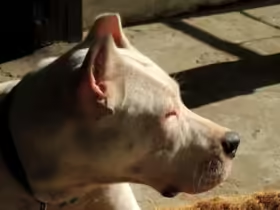A cat’s coat is often a reflection of their overall health. A shiny, smooth, and soft coat is a sign of a well-nourished, healthy cat, while a dull, flaky, or matted coat can indicate underlying health issues or grooming neglect. Grooming your cat not only helps maintain the beauty of their fur but also plays a key role in their general well-being.
This guide will take you through the art of cat grooming, from brushing techniques to diet tips, and how to prevent and treat common skin and coat issues.
1. Why Grooming Is Important for Cats
Cats are known for their meticulous grooming habits. They spend a significant portion of their day licking their fur to clean themselves. While this self-grooming is effective, it doesn’t replace the need for human assistance. Regular grooming helps you keep your cat’s coat free from knots, mats, and excess shedding. It also allows you to check for signs of skin conditions or parasites, ensuring early detection of potential health problems.
Key Benefits of Regular Grooming:
- Reduces shedding and hairballs
- Prevents mats and tangles in long-haired cats
- Stimulates blood circulation and promotes healthy skin
- Helps you bond with your cat through gentle handling
- Allows for early detection of skin issues, fleas, or ticks
2. The Basics of Cat Grooming
Whether your cat has short, medium, or long fur, establishing a regular grooming routine is essential. The frequency and tools you need will depend on your cat’s coat type.
Short-Haired Cats:
Short-haired cats generally require less maintenance, but they still benefit from occasional grooming to remove loose hair and reduce shedding. Aim to brush your short-haired cat once a week using a soft-bristle brush or rubber grooming glove.
Medium and Long-Haired Cats:
Long-haired cats are more prone to mats and tangles, especially in areas like the chest, belly, and behind the ears. They require more frequent grooming—typically 3 to 4 times a week, or even daily in some cases. Use a combination of a wide-toothed comb and a slicker brush to gently detangle knots and prevent mats from forming.
3. Essential Cat Grooming Tools
The right grooming tools make all the difference in keeping your cat’s coat looking its best. Here are some essential items for a cat grooming kit:
- Slicker Brush: Ideal for removing loose hair and detangling fur, especially for long-haired cats.
- Bristle Brush: Perfect for short-haired cats, this brush helps distribute natural oils throughout the coat, adding shine.
- Wide-Toothed Comb: Great for tackling tangles and mats in long or medium-haired cats.
- Rubber Grooming Glove: A gentle option for cats that are sensitive to brushes, this glove removes loose fur while giving your cat a soothing massage.
- Flea Comb: Used to check for fleas and remove them if necessary.
- Nail Clippers: Keep your cat’s claws trimmed to prevent them from getting too long or sharp.
- Cat Shampoo: If your cat requires a bath, use a cat-specific shampoo that is gentle on their skin and coat.
4. Brushing Techniques for a Healthy, Shiny Coat
Brushing is the most important part of grooming and helps to distribute your cat’s natural oils, making the coat shiny and smooth. Here’s how to brush your cat properly:
Step-by-Step Brushing Technique:
- Choose the Right Time: Make sure your cat is relaxed before you start. It’s best to groom them after a meal or nap when they’re calm.
- Start Slowly: Begin by gently stroking your cat’s back with the brush to get them used to the sensation. Don’t rush the process.
- Work in Sections: Brush your cat’s coat in small sections, starting from the head and working your way down to the tail. Pay extra attention to areas prone to tangling, like the belly and behind the ears.
- Use Gentle Strokes: Be gentle, especially if your cat has mats or tangles. Avoid pulling on the hair as it can hurt and cause your cat to resist future grooming sessions.
- Check for Skin Issues: While brushing, inspect your cat’s skin for signs of irritation, parasites, or dryness. If you notice redness, sores, or an abundance of dandruff, consult your vet.
5. Bathing Your Cat: Do’s and Don’ts
Most cats do not need frequent baths, but there are times when bathing is necessary, such as if your cat gets into something dirty or has a skin condition. When bathing your cat, follow these guidelines:
How to Bathe Your Cat:
- Use a Cat-Specific Shampoo: Never use human shampoo on cats, as it can irritate their skin. Choose a mild, cat-safe shampoo.
- Prepare the Area: Fill a sink or bathtub with 2-3 inches of lukewarm water. Place a towel or rubber mat at the bottom to prevent your cat from slipping.
- Wet the Coat: Gently pour water over your cat’s body, avoiding the face and ears.
- Lather the Shampoo: Apply a small amount of shampoo, working it into a lather while massaging your cat’s body. Again, avoid the face and ears.
- Rinse Thoroughly: Rinse your cat thoroughly with clean water to remove all traces of shampoo.
- Dry Gently: Wrap your cat in a towel and gently pat them dry. If your cat tolerates it, you can use a hairdryer on the lowest heat setting to speed up the process.
Tip: Avoid over-bathing as it can strip the natural oils from your cat’s coat, leading to dry skin and a dull coat.
6. Diet and Hydration for a Healthy Coat
Nutrition plays a significant role in the condition of your cat’s coat. A healthy, balanced diet rich in essential fatty acids, protein, and vitamins can make your cat’s fur shiny and resilient.
Nutrients for a Healthy Coat:
- Omega-3 and Omega-6 Fatty Acids: These essential fatty acids are crucial for skin and coat health. Look for cat foods that include fish oil or flaxseed oil, or consider adding a supplement if recommended by your vet.
- Protein: Cats need a protein-rich diet to support healthy skin and fur. Ensure your cat’s food contains high-quality animal-based proteins.
- Vitamins and Minerals: Nutrients like vitamin E, zinc, and biotin are important for maintaining a soft, shiny coat.
Hydration:
Dehydration can lead to dry skin and a dull coat. Ensure your cat drinks plenty of water, especially if they eat primarily dry food. You can increase your cat’s water intake by feeding wet food or using a cat water fountain.
7. Common Cat Coat and Skin Issues
Even with regular grooming and a balanced diet, cats can experience coat and skin issues. Here are some common problems and how to address them:
Mats and Tangles:
Mats are clumps of tangled fur that can form in long-haired cats if they aren’t groomed regularly. Mats can be uncomfortable and may cause skin irritation.
How to Treat Mats:
- Use a wide-toothed comb to gently work through tangles.
- If the mat is too tight or large, use a mat splitter or seek professional grooming help.
Dandruff:
Dandruff, or flaky skin, can result from dry skin or a lack of essential fatty acids in the diet. Stress, allergies, or skin infections may also cause dandruff.
How to Treat Dandruff:
- Ensure your cat is properly hydrated and eating a balanced diet.
- Brush your cat regularly to stimulate oil production in the skin.
- Consult your vet if dandruff persists, as it could be a sign of an underlying health issue.
Hair Loss (Alopecia):
Hair loss in cats can be caused by stress, allergies, parasites, or medical conditions such as thyroid problems.
How to Treat Hair Loss:
- Identify the cause of the hair loss with the help of your vet.
- Treat any underlying conditions, such as allergies or parasites.
- Ensure your cat’s diet is nutritionally complete.
8. When to Seek Professional Help
Some cats may resist grooming, especially if they have long fur prone to tangles or mats. In these cases, it may be best to seek the help of a professional groomer who has experience handling cats. Professional groomers can safely remove mats, trim your cat’s fur if necessary, and give them a thorough cleaning.
Tip: Cats with skin conditions or severe matting may also require veterinary care, so consult your vet if grooming becomes difficult or if you notice any skin abnormalities.











Leave a Reply